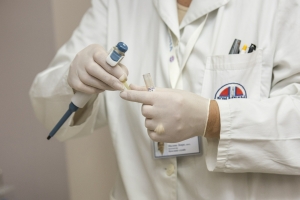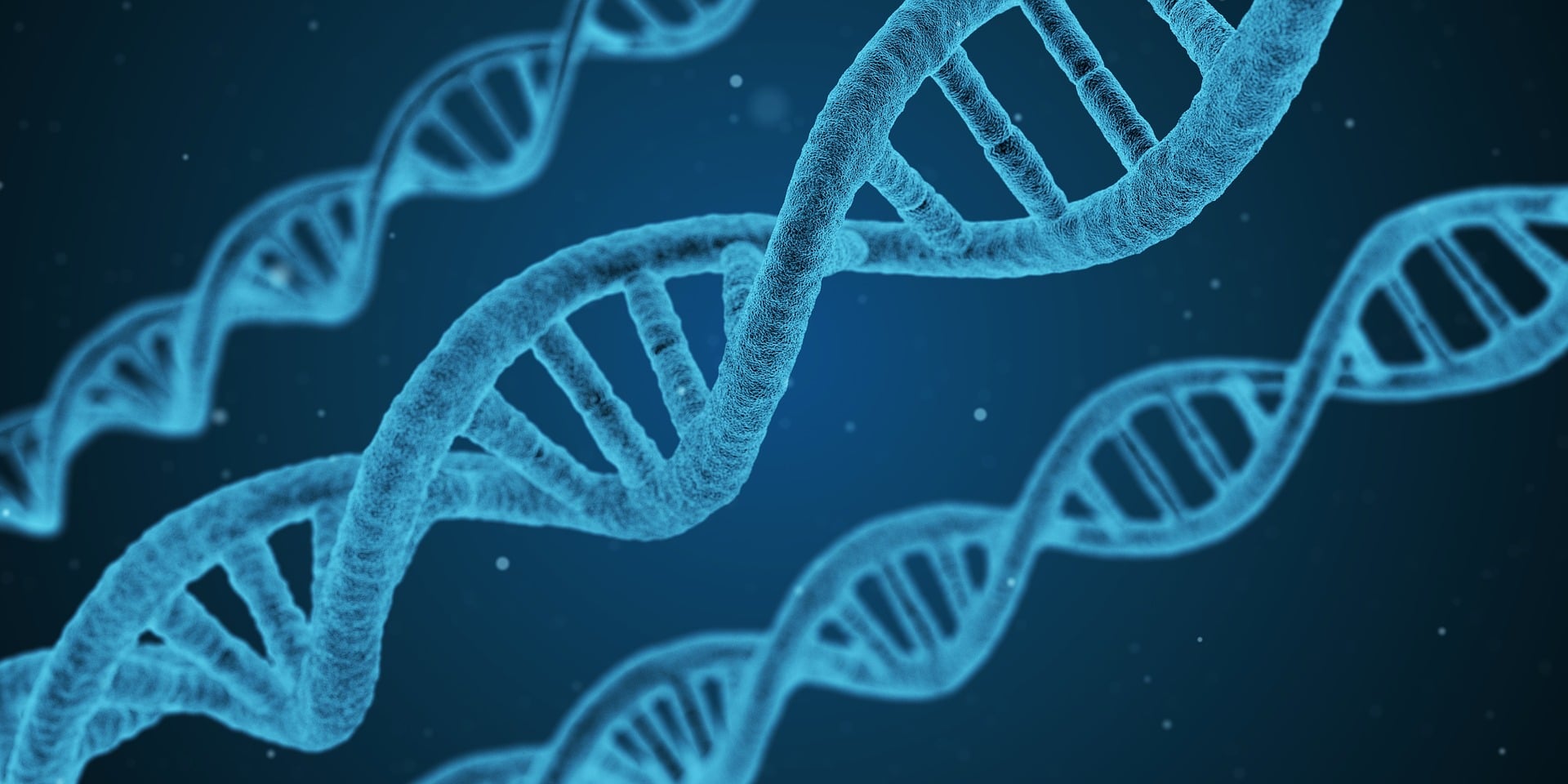Next Generation Sequencing Data: Tertiary Analysis
As NGS technology and the NGS market develops, the analysis, and interpretation of NGS data has proven to be one of the most complex aspects of transforming NGS data into meaningful results. Tertiary analysis, which follows primary and secondary analysis of the data, is among the most challenging steps.
The Evolving Market
This is because tertiary analysis is key to how sequencing results are used. “The core of tertiary analysis is what we refer to as ‘interpretation.’ Interpretation involves the biological classification of observed variants, determination of the clinical relevance of these variants, the deemed action-ability of these variants in terms of treatment options, and extends to the ordering physician in terms of how clinically helpful the results or recommendations are,” explained Sean Scott, Vice President of Market Development at QIAGEN. QIAGEN’s NGS software platform serves all stages of NGS data analysis, including tertiary analysis.
As the use of NGS grows in the clinical and molecular diagnostics markets, the need for accurate and timely interpretation will become even greater. “[W]hen a cancer patient has progressed to a late-stage cancer, they’ve moved through the initial steps of standard care practices and they’re looking for alternative treatment and/or investigational drug options,” he explained. “[In this case,] interpretation can involve not just the molecular and genomic profiling of a patient, but the assessment of how the diagnostic, theranostic, resistance or prognostic data enables a medical oncologist to identify and select the right targeted therapies or combination of therapies for their patient, based upon the evidence indicating that the treatment(s) may be efficacious for a patient-specific cancer type and genomic molecular profile and likely improve the patient’s outcome.”
“There really just continues to be an under appreciation for the importance of what we refer to, more broadly speaking, as dry lab capabilities, but certainly tertiary analysis is a part of that.”
QIAGEN’s acquisition of a number of NGS informatics firms, and its ongoing investment via several acquisitions and internal R&D, gives it a unique position in the market. According to Mr. Scott, the company has invested in increased R&D spending for product integration and new products.
The company’s history in life science and clinical labs as a provider of laboratory products has also proven valuable, especially for customizing NGS solutions, said Mr. Scott. “QIAGEN has a very broad perspective on what the unmet needs and challenges are across the life sciences life cycle, from early-stage research to discovery [and] target id, through translational and clinical research, to diagnostics and point of care.”
In addition, the company’s NGS informatics offerings differentiate themselves in other ways. “We really look to provide both QIAGEN-branded support for those, but also universal support for our customer needs,” noted Mr. Scott. “There’s no conflict of interest in our business model where we need to build proprietary solutions, so to speak, to try to lock customers into our proprietary offerings.” This extends throughout the workflow. “However, because we have such a comprehensive portfolio, we can offer customers complete workflow solutions or a la carte, best-in-class solutions, depending on what they need.”
One of the issues confronting NGS tertiary informatics is a lack of standardization. “[I]f we design our commercial products in collaboration with the customers they’re intended to serve—and we validate with third parties, and eliminate or at least mitigate some of the inherent bias—we’re really working towards becoming the standard,” explained Mr. Scott. “That’s the approach we’re taking in tertiary.”
This includes supplementing widely available open source and freeware solutions for tertiary analysis. “When you speak to how to position commercial interpretation solutions with open source and freeware, I think, again, QIAGEN’s differentiation is largely based upon the level of investment it makes in our underlying knowledge base and evidence repositories, and how we think about that corpus of information, relative to what I highlighted earlier, in terms of the key challenge being understanding and accepting that human biology is complex,” said Mr. Scott. “You need to understand that before you can actually implement practical applications.” He added, “[A]t the end of the day, commercial companies play a role in developing sustainable, well-supported solutions, and that will be of increasing importance moving forward. Both are needed.”
Nonetheless, so-called dry lab capabilities in NGS is an area that has been less emphasized and relative to the investment in instrumentation, according to Mr. Scott. “There really just continues to be an under appreciation for the importance of what we refer to, more broadly speaking, as dry lab capabilities, but certainly tertiary analysis is a part of that.”
As new NGS applications expand, such as sequencing of newborn children or retesting individuals over their lifetime, the need for such capabilities will become even more evident. “I’m hopeful that we’ll see increased levels of collaboration between organizations such as NIH, the professional associations, whether it be American College of Medical Genetics, Association of Molecular Pathologists, or CAP [College of American Pathologists], and those type of industry organizations and commercial companies,” stated Mr. Scott. “[This is] because our philosophy is that there are big problems to solve, and ‘coopetition’ and collaboration will help this market develop and help the customers, patients [and] consumers it’s intended to serve more than through competition and people trying to do things independent of one another.”
As a participant in the tertiary analysis market, QIAGEN is contributing to efforts to compile and integrate data from multiple sources, according to Mr. Scott. “One of the things QIAGEN looks at as we build out our commercial solution is really trying to find better ways to facilitate integration of systems and data sharing across institutions, what we call multiparty data sharing, but providing the infrastructure and methods for doing so in a de-identified, highly secure way as compliant with HIPAA law, etc.”
Clinical Labs’ Needs
Roche Sequencing Solutions Belmont (formerly Bina Technologies) is also seeking to provide tertiary analysis software addressing the shortcomings of today’s platforms, particularly for clinical labs. “When Bina Technologies was acquired by Roche in 2015 (see IBO 12/31/14), its existing solutions were primarily designed for customers in the research and pharmaceutical space,” said Narges Bani Asadi, PhD, founder of Bina Technologies and Lifecycle Leader, Roche Sequencing Solutions Informatics. “With the intent on delivering best-in-class solutions tailored for clinical purposes, the organization is applying its expertise in informatics, a critical part of the clinical sequencing workflow, to develop such a fit-for-purpose solution for the clinical lab customer.”
“Usability is also important, and labs have found current software solutions in the market vary with respect to how well they enable their users to manage variant information which comes from up to tens of databases and thousands of literature sources.”

Specifically, Dr. Asadi highlighted the needs of oncologists using NGS data. “While those performing testing of germline tissues are required to identify the subset of variants that are pathogenic for patient disease, labs that have undertaken testing of tumors have additional tertiary analysis challenges,” she noted. “The fact that cancer arises due to multiple driver mutations, and that each such driver varies with respect to its associated actionability, variant interpretation and reporting is more complex than germline testing.”
NGS data analysis is also complicated by the need for well-curated content. “Additionally, while oncologists are well-educated on the few high-frequency mutations occurring in the most common cancers, most require additional information in a report to inform them of the patient management options associated with other variants detected in their patients’ cancers,” said Dr. Asadi. “Thus, software solutions that enable labs to extend interpretation of tumor or somatic mutations to include the patient management options and supporting clinical evidence can provide the expertise within a software solution that is not otherwise available to all but the top-tier academic centers.” This need is common, according to her. “Even for top-tier academic centers, comprehensive curated content allows the lab to scale to higher test volumes and reduce average turnaround time.”
In addition to the need for HIPAA-compliant solutions, fast turnaround times, increased variant data sharing, and integration with existing lab software, current tertiary analysis solutions, which are primarily geared toward the research market, vary in other aspects. According to Dr. Asadi, “Usability is also important, and labs have found current software solutions in the market vary with respect to how well they enable their users to manage variant information which comes from up to tens of databases and thousands of literature sources.” In addition, regulatory needs are key. “Roche Sequencing Solutions also recognizes that the regulatory landscape around clinical decision support for NGS testing is evolving and is committed to collaborating with industry partners, and working closely with various regulatory authorities to shape the guidelines that best satisfy the safety and regulatory requirements,” she explained.
These needs also extend to hospital labs. “The expertise required in terms of bioinformatics and genetics knowledge is currently not available in most hospital labs,” commented Dr. Asadi. Thus, an end-to-end tertiary analysis solution with extensive curated content can help hospital labs address this current limitation.”
A Comprehensive Solution
Another provider of commercial software for NGS tertiary analysis is Fabric Genomics (formerly Omicia). The company was founded in 2009. “Our main customers are clinical labs: you have reference labs and then you have smaller clinical labs, and then you definitely have hospital labs as well,” explained Vanessa Sawyer, director of Global Marketing for Fabric Genomics. The range of entities it serves is also wide. “You have research institutions, and then you also have country sequencing programs, that can be affiliated with a hospital or a bigger research institution, or a government entity.”
As Ms. Sawyer highlighted, the company’s tertiary analysis software provides flexibility that benefits users. “The benefit of our software is that it is one platform for panels, exomes and genomes,” said Ms. Sawyer. “[I]t helps lab directors produce a clinical report; we can perform secondary and tertiary analysis, we have structural variant capabilities, we have proprietary algorithms, and we process germline and somatic data,” she added.
“In our software, you add in patient phenotypic terms, which helps with identification of disease-causing variants.”
It also is able analyze many types of variants, including structural variants and in this way, according to her, meets an important need in the market place. “We feel our solution is very comprehensive,” noted Ms. Sawyer. This comprehensiveness extends to other types of data. “In our software, you add in patient phenotypic terms, which helps with identification of disease-causing variants.”
As with other companies, the need for standardization and compliance with third-party guidelines for tertiary analysis solutions is crucial, according to Ms. Sawyer. “We were the first data analysis company to implement ACMG [American College of Medical Genetics and Genomics] guidelines in our software in 2016. After that, we implemented the AMP [Association for Molecular Pathology] guidelines.”
As these three companies detailed, the challenges inherent in tertiary analysis of NGS data are vast, but an understanding of these challenges is informing new approaches to provide solutions for researchers, clinicians and patients.
For additional exclusive interview content, check out “NGS Tertiary Analysis: Companies Craft New Approaches for Clinical Labs” in the latest issue of Instrument Business Outlook. Not a subscriber? Click here for a free trial subscription.
For more information on the NGS informatics markets, see the BioInformatics LLC’s report, The 2017 Market for NGS Informatics: Probing the Commercial Landscape.





